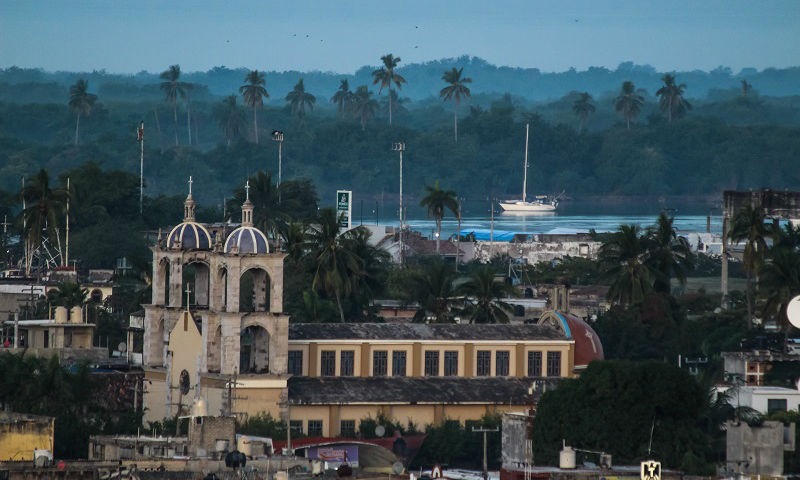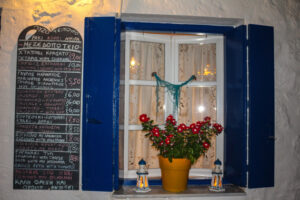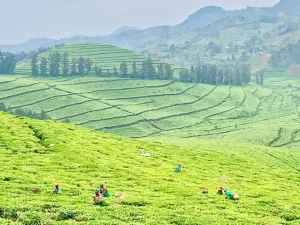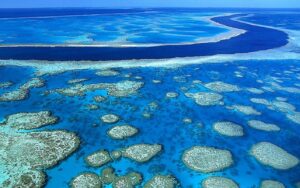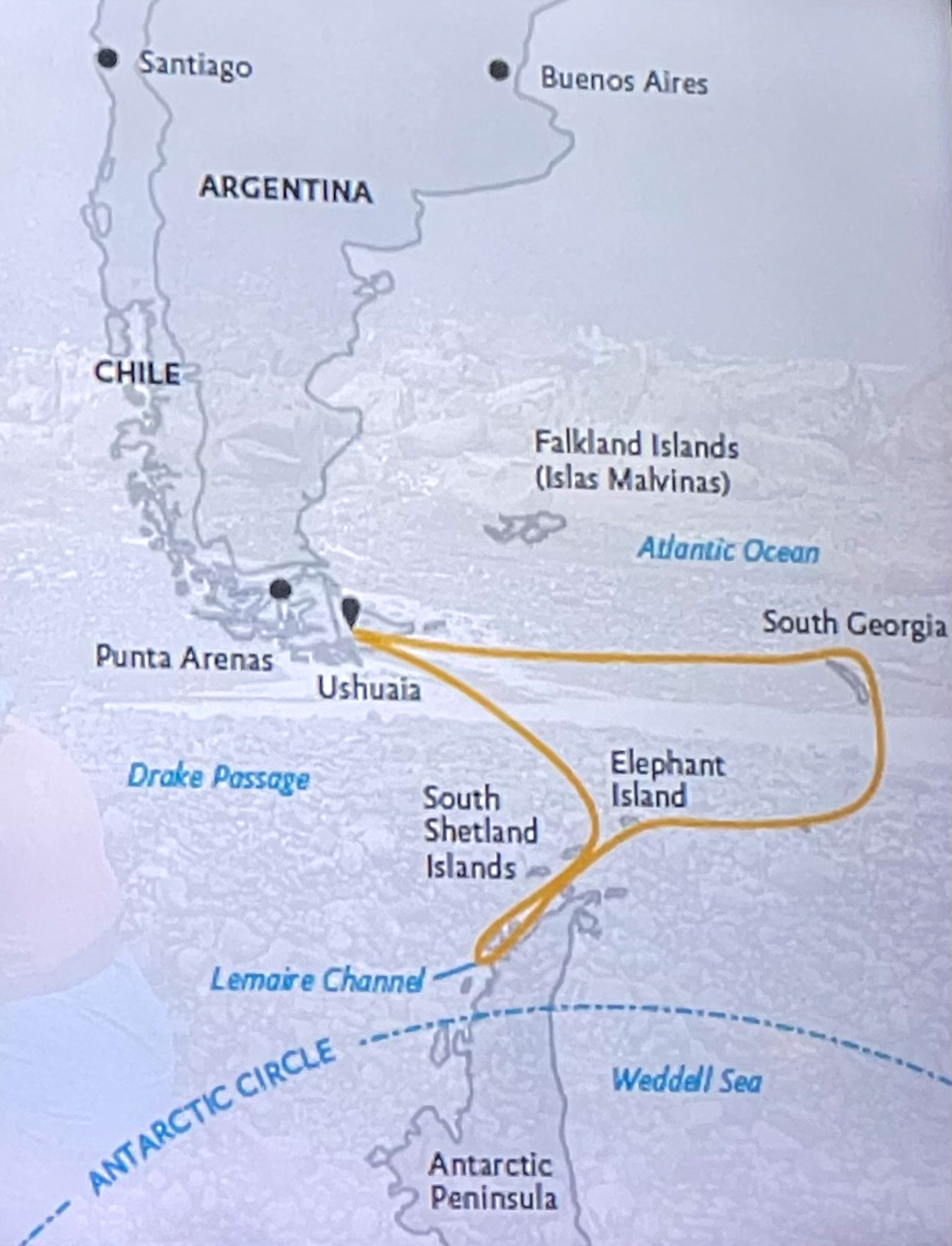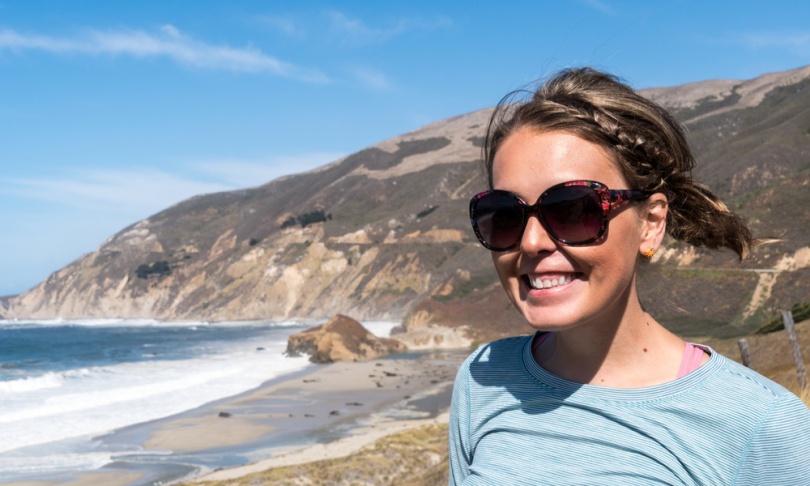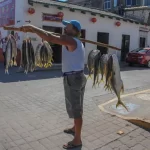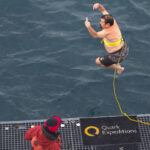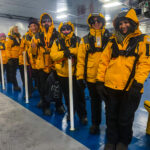It’s 5 p.m. at the San Blas Social Club, one of the few watering holes in the forgotten historical port of the same name in the lush green jungle and the sun-drenched state of Nayarit.
While nursing a cold Pacifico, a rare engagement occurs: I meet Paul, a jovial English tourist from Cornwall, who’s dressed head to toe in washed out khakis. It’s not all that often that you encounter Europeans exploring the Pacific side of Mexico. I wonder how this guy arrived in San Blas.
The boondock settlement of around 10,000 inhabitants is three hours north of fashionable Puerto Vallarta, but few vacationers venture past the sun-splashed beaches of the newest hipster-surfer hangout of Sayulita. Think Kuta Beach on Bali around 25 years ago.
I ask Paul what brings him to this sluggish fishing village. “Don’t you know that this area is one of the most important bird watching areas in the world?” Paul replies.
Image via Nicholas Kontis
I had known that, but it’d slipped my mind. Life moves at a snail’s pace in the sweltering “Mexican Everglades,” so I’m more inclined to make sure that my Pacifico doesn’t get lukewarm than trying to catch a glimpse of the graceful white Herons with stick-like legs and stately beaks, known locally as the “garza blanca.”
Suddenly, the burly Englishmen jumps up, “I have to go now. The sun will set soon, and this is when prime bird watching time begins.” I’m still not moving from my bar stool. I’ve never seen a portly Brit move so quickly for a glimpse of a few feathered friends.
Thinking about a trip to Mexico? Make it happen with these limited-time low fares — check them out!
According to the Audubon Society, close to 300 species of birds call the canals, mangroves, lagoons, estuaries, beaches, and surrounding mountains their home. Only Panama has a higher concentration of bird species in the Western Hemisphere. On top of that, 80% of all migratory birds in North America assemble in the San Blas region during the winter months.
Image via Nicholas Kontis
But there’s more to the area than just birds. Besides being an under-the-radar, top-notch eco-tourism destination, San Blas holds a prominent place in both Mexican and U.S. history. Long before famed Hollywood film director John Huston made Puerto Vallarta famous when he filmed The Night of the Iguana, which included the romantic rendezvous of Elizabeth Taylor and Richard Burton, the port on the Pacific remained far noteworthy and intertwined in the early days of Spanish colonialism shaping the destiny of both Mexico and California.
A visit to San Blas is taking a step back in time, to a lost land of Spanish Conquistadores when the shipyard and port of San Blas was the epicenter of the Spanish empire on Mexico’s Pacific coast. The 17th-century port was the first maritime customs house on the Pacific and was at the forefront of Spain’s purpose to colonize Mexico, capturing new land, gold, and other resources of wealth while spreading Christianity throughout the new world. The Spaniards departed from San Blas in March of 1775 to discover Monterrey and San Francisco Bay.
Image via Nicholas Kontis
There isn’t much lingering evidence of Spanish rule in San Blas. The preserved historical remains of La Contaduria — the customs house and fortress that can be found perched on San Basilio hill at the entrance of town — are all that’s left. You’ll find the customs house, accounting offices, church, and fort, complete with leftover cannons pointing towards the sea. One gets a sense of the paramount role the district played in the war for Mexico’s Independence.
Close by are the ruins of the Nuestra Senora del Rosario church, which was constructed in 1769. There, you can imagine the haunting bellows of Spanish soldiers and begin to believe how significant and celebrated San Blas was from its conception. Like an old Mexican period film, one gets a sense of how life in colonial Mexico might have been.
While awestruck by the hillside fortress, spellbound by the tiny town below, and captivated by the inlet and port in the forefront, I encounter resident storyteller and honorable San Blaseno Jose Nicolas Quirarte as he reflects on the implications on this well-documented setting.
“Here in San Blas, we have directly affected the history of Mexico, Spain, and California,” Mr. Quirarte informs me. “I’m 80 years old, and a proud, San Blaseno. This is my town, and I’m proud of its history. I have dedicated my life to tell the story of San Blas.”
One marvels that the storytellers of this seaside village mired deep in history have passed on the tales of a bygone era from generation to generation.
San Blas received a renaissance in the 60s and 70s when hippies and surfers discovered its pristine beaches and perfectly formed waves. It’s well known to have the longest right breaking surf wave in the world. San Blas embodies the laid-back, mellow daydream of Mexico’s undiscovered Pacific beaches.
It’s rare for foreigners to spend time in the area other than in the winter months. The majority are retired U.S. and Canadian expats, who flock south from December to April to escape the harsh North American freeze.
But anyone who spends plenty of time in San Blas becomes immune to the pesky, annoying sand flies known as jejune or noseeums, who enter the beach scene at sunrise and sunset. Mosquito repellent is wisely kept in striking distance if on the beach or a jungle trip on a local panga boat.
Can the small sandfly be the reason for a Mexican resort development not happening in such a historical and pristine place? Maybe. But the laid-back locals have no interest in developing this rarely-visited swamp and jungle land that foreigners seem to miss. The area boasts three beautiful beaches, birding, croc-watching in its backwaters, and an abundance of tropical fruit trees. One must wonder how this eco-wonderland has remained estranged from foreign travelers and why, in a setting that rivals jungle-beaches in Southeast Asia or the Philippines, it is not overrun with ubiquitous chain hotels.
Image via Nicholas Kontis
During the day in San Blas, fishermen stroll the dusty streets flaunting the catch of the day (there’s also an abundance of shrimp and oysters in the region). The pace is slow; one can hear a pin drop in the un-rushed plaza that’s the hub of small-town Mexican life. But while the town may doze off in the daytime, it comes to life as the sun sets over the Everglades-like mangroves and estuaries.
Image via Nicholas Kontis
On Friday and Saturday nights, the sleepy town comes to life with blaring banda musicians heard throughout town while children play in the square. This is Mexico; all age groups fill up the plaza, turning it into one giant fiesta while street vendors hawk everything from carne asada tacos and hot churros to Tupperware and CDs. It’s prime time for locals and expats to mingle and gather to rejoice and tell tales of the past work week.
The pulse of San Blas is on the fringe of going up a notch. In the past five years, the state of Nayarit has been on a mission to develop palm-lined Matanchen Bay into a resort area for Mexican locals and has allowed a greater influx of houses to be built on Matachen Beach. A pier, an unpretentious hotel, and a few restaurants have sprung up, yet the likes of luxury resort chains: Melia, Rui, Sheraton, and Marriott remain far-flung, three to five hours away in Puerto Vallarta and Mazatlan.
Although tourists mays soon discover the slumbering, beach-tropical rain forest world filled with mango, jackfruit, pineapples, papayas, and more, it appears that life will continue serenely at a tortoise pace and will remain mostly undisturbed. If you prefer a low-key eco-tourism paradise far away from highly trafficked tourist destinations, San Blas might be the place for you.

